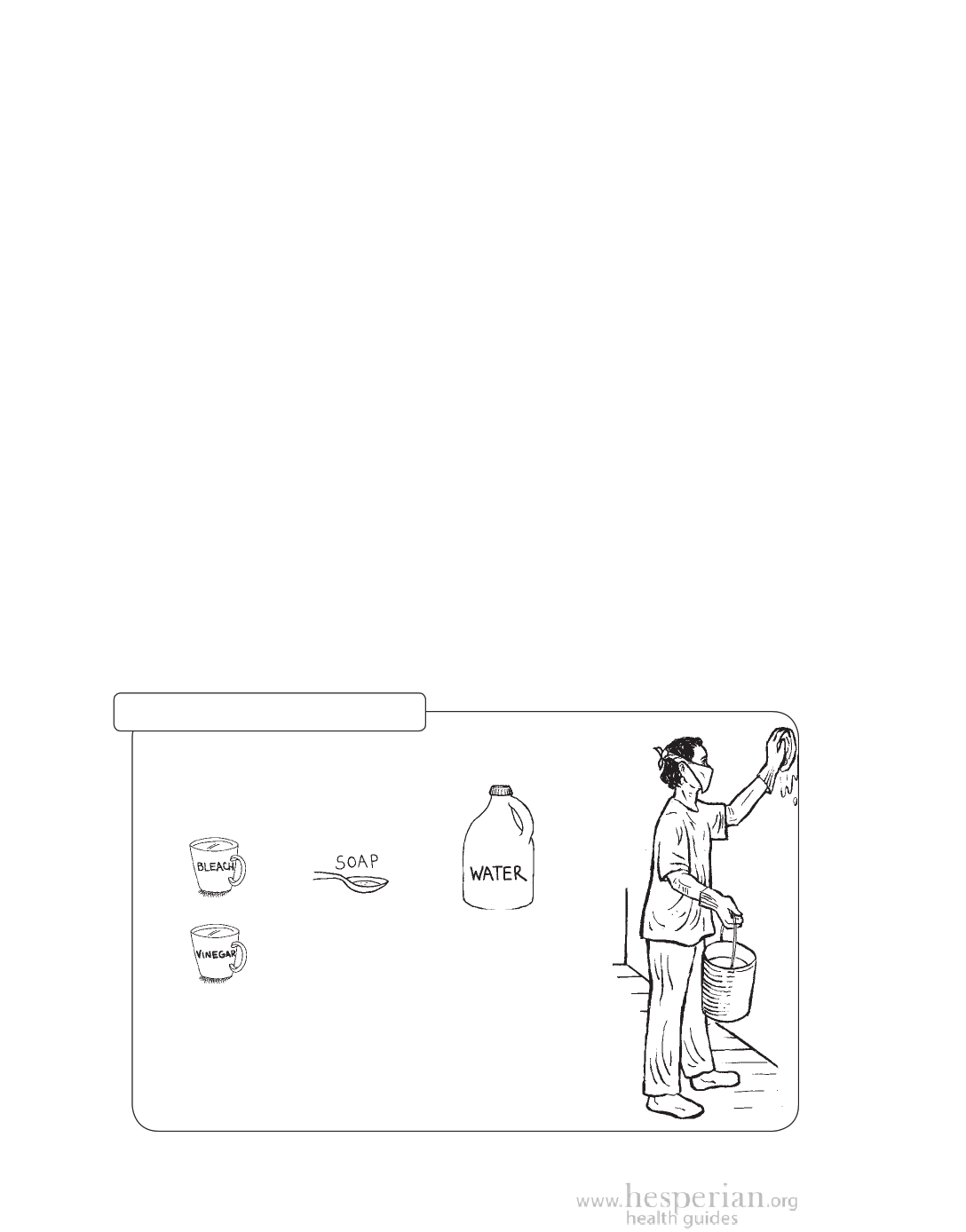
358 A Healthy Home
Mold
Mold is a kind of fungus, a simple plant that grows on soil and other plants.
In the home, it grows on walls, clothing, old or spoiled foods, and in any damp
place. Mold is also called ‘mildew.’ Most molds and mildews look like black or
yellow powder, tiny threads, or white and blue fuzz.
Outdoors, molds are important to the environment. Molds help dead things
decay and turn back into soil. But mold releases tiny spores that can cause
health problems for people who breathe them. Molds also destroy the things
they live on, so having mold inside the home is never good.
Molds cause breathing problems, headaches, skin irritation, and can trigger
asthma attacks and allergic reactions. Rarely, exposure to some molds may
lead to serious health problems and death, especially in infants. People with
HIV are especially vulnerable to the health problems caused by molds.
To prevent and get rid of mold
Molds grow in damp places with poor ventilation. To prevent and get rid of
mold, try to do 1 or more of these things:
• Fix leaks in walls, roofs, and pipes.
• Improve ventilation. When more air passes through the home, it keeps
everything drier and helps prevent mold from growing.
• Wash areas where molds grow with bleach solution.
How to make a bleach solution
Mix: 1 cup of bleach, ¼ teaspoon of liquid soap,
and 4 liters (1 gallon) of water
++
(Adding one cup of vinegar will help
this solution kill more germs along with
the mold.)
Wear gloves and a face mask or cloth over your nose and
mouth, and keep windows open while washing surfaces
with this bleach solution. Let the solution stay on for
10 to 15 minutes, then rinse with plain water. Wipe the
surfaces dry to prevent mold from growing back.
A Community Guide to Environmental Health 2012